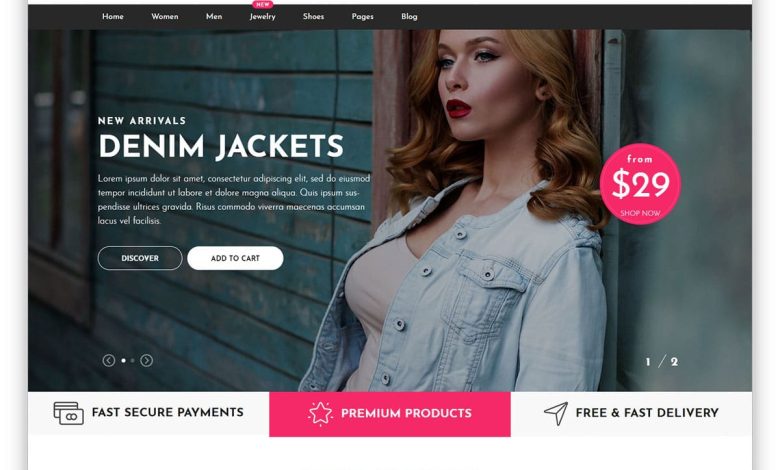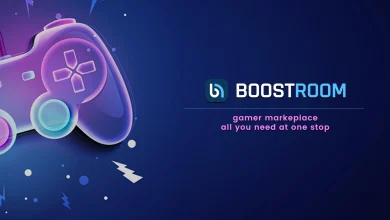Seamless Shopping Experiences: Elevate Your Brand with Cutting-Edge eCommerce Design

In the highly competitive eCommerce landscape, providing a seamless shopping experience is essential for distinguishing your brand and driving conversions. Cutting-edge design plays a pivotal role in creating an intuitive, engaging, and efficient online store that not only attracts visitors but also retains them. This article explores the latest eCommerce website design strategies that can elevate your brand and deliver unparalleled shopping experiences.
The Essence of Seamless Shopping Experiences
User-Centric Design
At the heart of a seamless shopping experience is user-centric design. This approach prioritizes the needs, preferences, and behaviors of your customers, ensuring that every aspect of your website is tailored to provide maximum usability and satisfaction.
Consistent Brand Identity
A strong, consistent brand identity across your eCommerce website design helps build trust and recognition. From color schemes and typography to imagery and tone of voice, every design element should align with your brand’s ethos and messaging.
Frictionless Navigation
Effortless navigation is crucial for guiding users through your site. Intuitive menus, clear categories, and accessible search functionalities make it easy for customers to find what they’re looking for without frustration.
Cutting-Edge Design Strategies
1. Dynamic Personalization
Personalization transforms a generic shopping experience into a bespoke journey tailored to individual users. Techniques include:
- Product Recommendations: Utilize AI algorithms to suggest products based on browsing history, previous purchases, and user preferences.
- Personalized Content: Display customized banners, offers, and messages that resonate with specific customer segments.
- Behavioral Triggers: Implement triggers that prompt personalized actions, such as reminding users of abandoned carts or suggesting complementary products.
2. Immersive Visuals
High-quality visuals are instrumental in capturing attention and conveying product value. Advanced visual strategies include:
- Augmented Reality (AR): AR technology allows customers to visualize products in their environment, enhancing their confidence in purchasing.
- 360-Degree Views: Provide interactive 360-degree product views to give users a comprehensive understanding of the product.
- Interactive Videos: Use videos that allow users to interact, such as clicking on features to learn more or seeing the product in action.
3. Streamlined Checkout Process
A complicated checkout process is a common cause of cart abandonment. Simplify this process with:
- One-Page Checkout: Consolidate all checkout steps into a single page to reduce friction.
- Guest Checkout Options: Allow users to make purchases without the need to create an account.
- Autofill and Payment Options: Integrate autofill for address details and offer multiple payment methods, including digital wallets like Apple Pay and Google Pay.
4. Progressive Web Apps (PWAs)
PWAs combine the best features of websites and mobile apps, offering a superior user experience. Benefits of PWAs include:
- Offline Functionality: Enable users to browse products and access information even without an internet connection.
- Push Notifications: Send personalized notifications about new arrivals, promotions, and updates to keep users engaged.
- Fast Load Times: PWAs load quickly and provide a smooth, app-like experience, reducing bounce rates.
5. Voice Search Optimization
With the rise of smart speakers and voice assistants, optimizing your eCommerce site for voice search is increasingly important. Key strategies include:
- Conversational Language: Use natural, conversational language in product descriptions and content to match how people speak.
- Voice-Activated Navigation: Implement voice-activated search and navigation features to enhance accessibility.
- FAQ Optimization: Create detailed FAQ pages that address common voice search queries to improve discoverability.
6. Sustainable and Ethical Design
As consumers become more environmentally conscious, incorporating sustainability into your eCommerce design can enhance your brand’s appeal. Approaches include:
- Eco-Friendly Aesthetics: Use design elements that reflect your commitment to sustainability, such as green tones and natural imagery.
- Transparent Practices: Clearly communicate your brand’s sustainable practices and ethical sourcing in product descriptions and dedicated pages.
- Sustainable Packaging: Highlight your use of eco-friendly packaging and encourage customers to make sustainable choices.
7. Social Commerce Integration
Social commerce integrates social media and eCommerce, providing a seamless shopping experience within social platforms. Strategies include:
- Shoppable Posts: Use platforms like Instagram and Facebook to create posts that allow users to purchase products directly.
- User-Generated Content: Encourage customers to share their experiences and use this content to build social proof and trust.
- Influencer Collaborations: Partner with influencers to showcase your products and reach a wider audience.
8. Enhanced Security Measures
Security is paramount in eCommerce. Implement robust security measures to protect customer data and build trust. Key practices include:
- SSL Certificates: Ensure your website is SSL certified to encrypt data and secure transactions.
- Two-Factor Authentication: Use two-factor authentication to add an extra layer of security for user accounts.
- Regular Audits: Conduct regular security audits to identify and address vulnerabilities.
Implementing Cutting-Edge Design
Comprehensive Market Research
Understanding your target audience is the first step in implementing effective design strategies. Conduct comprehensive market research to gather insights into customer preferences, behaviors, and pain points.
Prototyping and User Testing
Before launching new design elements, create prototypes and conduct user testing to gather feedback and make necessary adjustments. This iterative process helps ensure that your design changes meet user expectations and enhance their experience.
Collaborating with Experts
Working with experienced web designers and developers can help you implement cutting-edge design elements seamlessly. Their expertise can guide you in choosing the right technologies and ensuring a polished, professional outcome.
Continuous Improvement
The eCommerce landscape is constantly evolving, so continuous improvement is key. Regularly update your site with new features, test different design elements, and stay informed about emerging trends to keep your website competitive and engaging.
Measuring Success
Analytics and KPIs
Use analytics tools to track key performance indicators (KPIs) such as conversion rates, bounce rates, and average session duration. These metrics provide valuable insights into how well your design strategies are performing.
Customer Feedback
Gather customer feedback through surveys, reviews, and direct interactions. This feedback can highlight areas for improvement and help you better understand customer needs and preferences.
A/B Testing
Conduct A/B testing to compare different design elements and identify which versions perform better. Test variations of CTAs, layouts, and content to optimize your site continuously.
Conclusion
Elevating your brand with cutting-edge eCommerce design is essential for providing seamless shopping experiences that convert clicks into customers. By focusing on dynamic personalization, immersive visuals, streamlined checkout processes, PWAs, voice search optimization, sustainable design, social commerce, and enhanced security measures, you can create an engaging, user-friendly online store that stands out in the competitive eCommerce landscape. Implementing these strategies with a user-centric approach and continuous improvement mindset will help you build a loyal customer base and drive long-term success.




